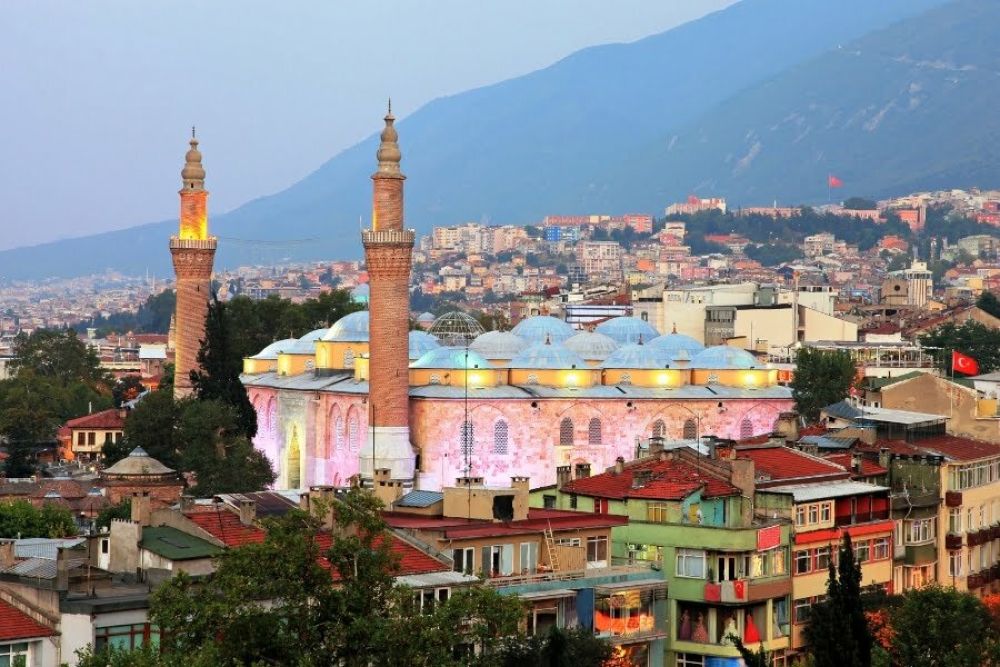

The city of Bursa, located in the northwest of Turkey, is one of the country's prominent historical and tourist destinations. Known as the first major capital of the Ottoman Empire and often referred to as "Green Bursa" due to its lush parks and gardens, Bursa's history with tourism stretches back to its establishment and especially to the era when it became a part of the Ottoman Empire in the early 14th century.
Even during the Ottoman period, Bursa was a popular stop for travelers due to its thermal springs. The city's numerous hammams (Turkish baths), some dating back to the 14th century, served not just as places for cleansing but also as social centers, promoting a form of early health tourism. Places like the historic Çekirge area have been a magnet for those seeking relaxation and treatment from the therapeutic waters, which are believed to have healing properties.
Bursa's position along the ancient Silk Road also contributed to its early tourism. As a key trading post, it attracted merchants and travelers from around the world, who would often marvel at its grand mosques, bridges, and silk markets. This early form of cultural tourism was driven by commerce but led to Bursa's reputation as a city of history and culture.
In the 20th century, Bursa continued to evolve as a tourist destination. With the development of the Republic of Turkey, Bursa became more accessible to international tourists. The establishment of the Uludağ National Park in 1961, which includes the famous Mount Uludağ, turned the city into a center for winter sports, particularly skiing. The mountain's proximity to the city center makes it a unique attraction, offering a combination of nature and history.
In recent years, Bursa has focused on diversifying its tourism offerings. The city promotes its culinary heritage, including the famous Iskender kebab, and it continues to develop its potential in various sectors, such as:
Today, Bursa's mix of natural beauty, winter sports, historical sites, and traditional Turkish culture make it a multifaceted destination for tourists from around the globe.
The history of tourism in Bursa, Turkey, is as rich and varied as the city itself. From its early days as a Roman hot spring destination to a bustling Ottoman capital and now a modern tourist hotspot, Bursa has long welcomed travelers of all kinds. It stands as a timeless witness to history and continues to charm visitors with its enduring appeal.